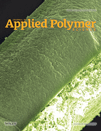Shear properties and load–deflection response of cross–ply glass–epoxy composite short–beams subjected to three-point-bending tests, and the effect of moisture absorption
Abstract
The extensive use of composites in aerospace, chemical, marine, and structural applications leads to exposure to humidity and water immersion. Hence, there is a need to study the effect of moisture absorption on the mechanical properties of composite materials, especially the matrix dominated properties, such as the interlaminar shear strength (ILSS). The horizontal shear test with a short-beam specimen in three-point-bending is used as a general method of evaluation for the shear properties in fiber-reinforced composites because of its simplicity. In this work, the ILSS of cross-ply glass-epoxy resin composites is determined in seven different fiber directions with short-beam three-point-bending tests, before and after moisture conditioning. It is found that moisture absorption reduces ILSS and stiffness of the examined composites whereas it leads to larger failure deflections. It is also found that the direction of fibers strongly affects the load–deflection response and the ILSS of the dry and conditioned specimens. © 2013 Wiley Periodicals, Inc. J. Appl. Polym. Sci., 2013




